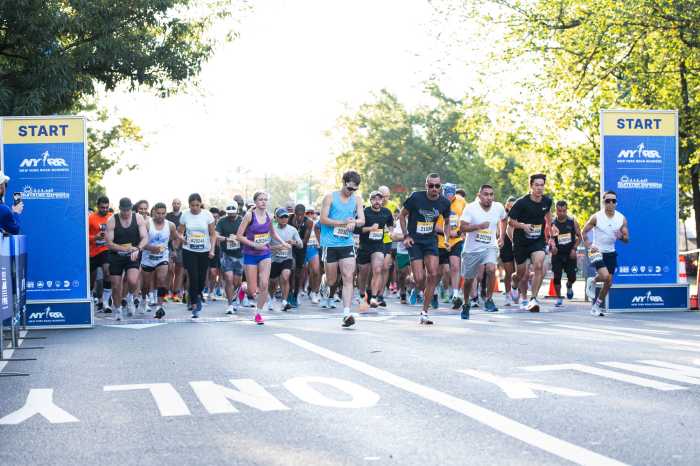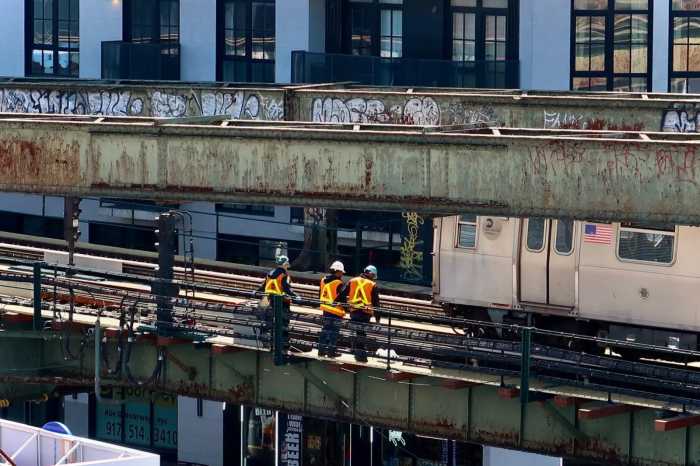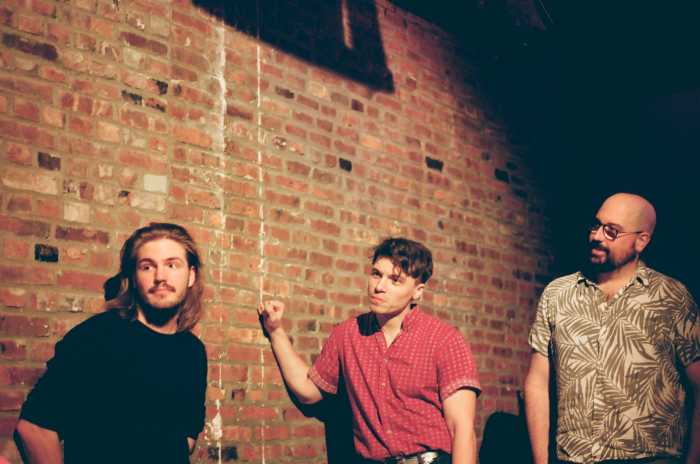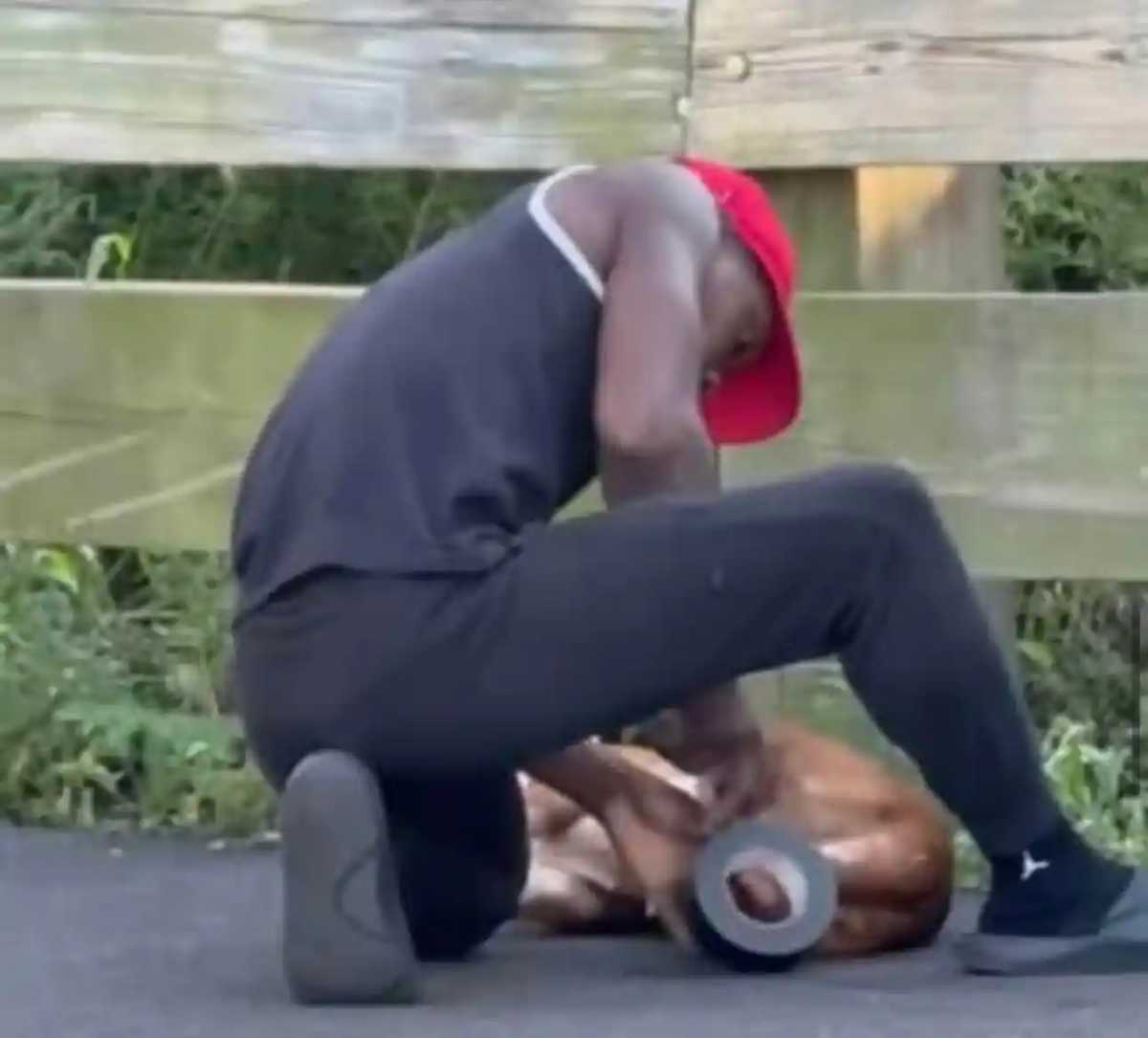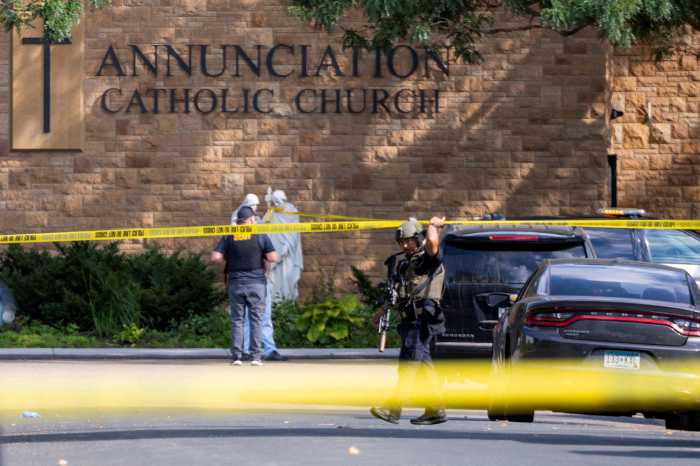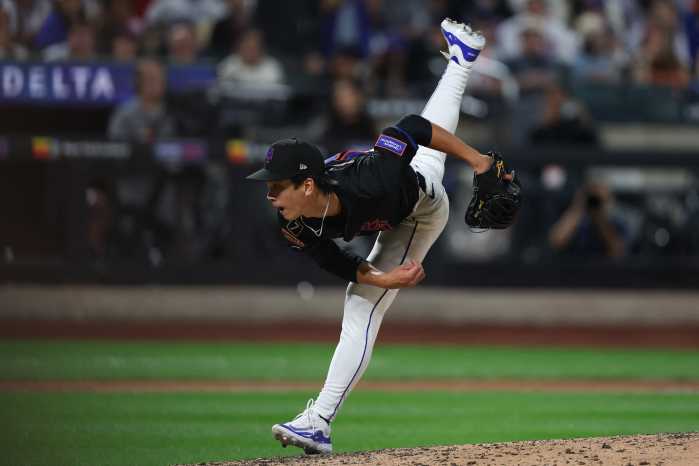The last of three meetings focusing on Pier 6 between the designers of
Brooklyn Bridge Park and select community leaders was intended to provide
answers to questions and criticisms they had raised about the planned
1.3-mile waterfront development.
What the community leaders got instead was yelled at.
Lead park designer Michael Van Valkenburgh flew into a rage during the
Feb. 7 meeting at his Manhattan office.
The sudden tirade came in response to a comment from a Brooklyn Heights
resident disputing a comparison made by a Van Valkenburgh associate who,
in response to criticism of a 30-story apartment building planned near
the park’s Atlantic Avenue gateway, pointed to what he called the
failure of Flushing Meadows Park, in Queens, due to a lack of housing
and population density at its perimeter.
“That park was only there because of the World’s Fair,”
Kenn Lowy said of the Queens park. “You can’t even come close
to comparing the two.”
That’s when Van Valkenburgh leapt from his chair.
“Bulls—- I can’t compare it! It’s a park! Don’t
tell me what I can and what I can’t compare it to,” he yelled
at Lowy.
“Michael, my point is —”
Van Valkenburgh cut in, “It’s a park for human beings that live
next door.”
“But Michael, that’s not my point, my point is, it was originally
for the World’s Fair —”
“It is what it is now, it’s a park,” said Van Valkenburgh.
“Do you want to have some other lamebrain excuse or do you want to
have the highest possible level of thinking about what a park oughta be?”
The argument continued back and forth and Lowy tried to end it by explaining,
“My point is, we are all living near Brooklyn Bridge Park in the
same way that people live near Prospect Park, or Central Park. We’re
a little bit more removed, but not by much. Plus 360 Furman St. [a private
high-rise condominium conversion] will bring in a lot of people. The views
of the park are nothing like what you see from Flushing Meadows, and you’re
equivocating the view of the Brooklyn Bridge with the view of this 30-story
building.”
“That isn’t what he said, but if that’s what you heard,
fine,” said Van Valkenburgh.
“But that is what he said,” Lowy responded.
“No, that isn’t what he said at all.”
A silence filled the room for several moments and then Pauline Blake,
a co-chair of the Community Board 6 land use committee and a member of
the Community Advisory Committee to the park planners, spoke up, but only
after raising her hand.
Blake calmly chastised Van Valkenburgh for his tirade.
“Michael, I am amazed that you would get up and scream at us for
giving our point of view,” Blake said. “As if [the park plan]
is just already an accomplished fact, and we, as a public, cannot have
an opinion without you getting irate that the suggestion that what you
designed is not what we, as Brooklynites, had in mind when we envisioned
this park.”
Blake added that she hoped Van Valkenburgh would be more prepared to handle
questions and criticism by Feb. 22, when CB6 and CB2 are hosting a town
hall meeting at 6:30 pm at Polytechnic University, during which Van Valkenburgh
is to present the plans to the public for the first time.
Instead of quieting down, the landscape architect shouted back that he
wasn’t yelling about the opinions being expressed but the “factual
error” Lowy had raised.
“Why don’t you stop shouting?” said Bernard Erlich, an
architect from Boerum Hill.
“OK, I will!” Van Valkenburgh shouted back.
Roy Sloane, a Cobble Hill activist and member of the Citizen’s Advisory
Committee, said he was afraid the park planners were doing themselves
in.
“You wouldn’t script Michael blowing up and calling everybody
a you wouldn’t think he would do it,” Sloane said. “But
then, there he is doing it.
“There is a level of demoralization that the whole process has produced,”
said Sloane, who added that he has spoken with many community members
who have begun to avoid the meetings altogether.
“I’ve had a number of conversations with citizen-activist types
who haven’t shown up to meetings lately,” he said.
Though Sloane said he hasn’t given up hope yet, he sympathizes with
those who have. “If you can have a giant public process where 3,000
people ratify a plan, and it can all just be thrown away, what’s
the point?” Sloane said, referring to the public park planning sessions
of 1999 and 2000 that produced a draft master plan that has been almost
entirely discarded.
Sloane likened the meetings with Van Valkenburgh and Leventer to “banging
your head into a brick wall.”
And although Van Valkenburgh characterizes the meetings as “community
workshops” in which to gather feedback, Sloane and others who have
attended the various park meetings at his office say the response never
changes.
“I didn’t sense any movement at all in any of the three meetings,”
said Sloane. “Nothing is possible, only exactly what they have projected
is possible. It wasn’t a planning session, it was more like a chance
for them to be defensive about what they’ve proposed.”
Erlich, who said he has been to five of the meetings in Manhattan, agreed.
“I don’t think they’re accomplishing a hell of a lot, because
[Van Valkenburgh] is so insistent on what he is doing that it doesn’t
allow anyone else to inject anything else other than that.”
Cobble Hill resident Stanley Maurer, who with his wife, Laurie, owns an
architecture firm in Brooklyn Heights, had not been to a meeting prior
to Monday’s.
“That’s the first time I’ve been exposed to his wrath,”
Maurer said of Van Valkenburgh. “I was broken in.”
He said he thought people were “pretty angry” about the process.
“Some people have actually walked away from it. I know of a number
of people who are just throwing their arms up and are not going to get
involved because there’s no seeming acceptance of ideas,” Maurer
said.
Sure enough, even the president of the Cobble Hill Association, Murray
Adams, who led the drafting of a letter signed by several neighborhood
associations urging for an open park planning process, said he “forgot”
about Monday’s meeting.
“I have to admit it was a slightly deliberate forget,” Adams
added. “I get awfully tired of hearing the same thing again and again.”
Pointing out his suggestion at the first meeting to cut off the piers
in order to save the huge maintenance and rehabilitation costs they bring
with them, and just focus the plan on the uplands, Adams said Van Valkenburgh
“assured me he was going to look into this. I didn’t hear any
response to that at all. Or indeed, to any of my questions.”
“I don’t think they’re listening,” said Adams. “They
don’t seem to care.”




